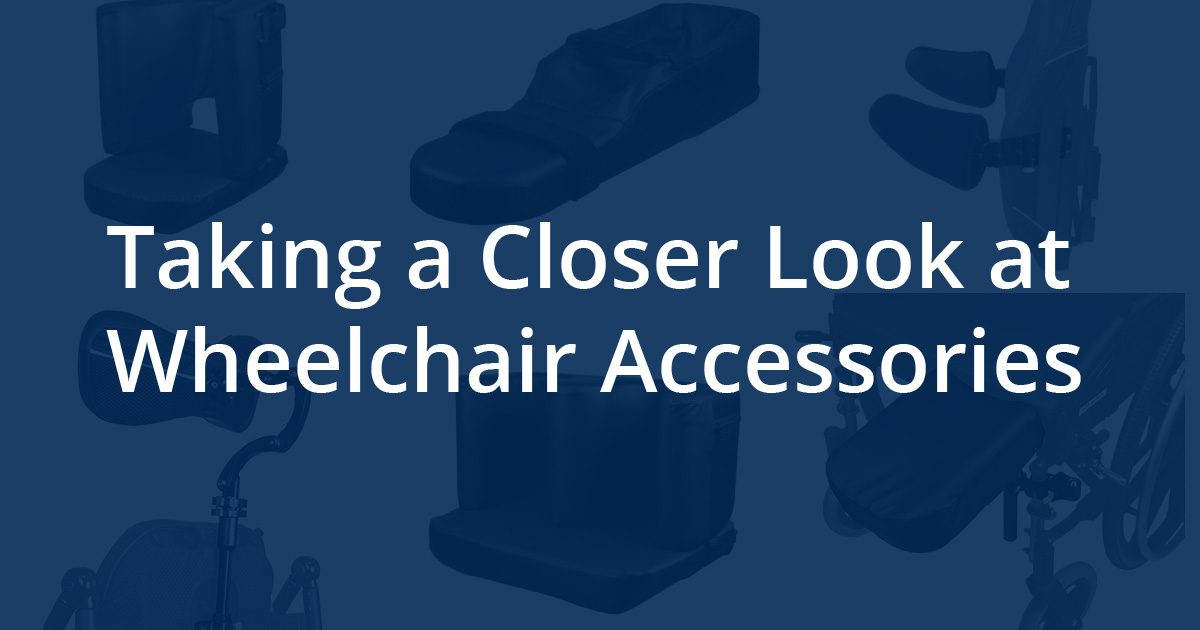Looking for more information on seating and positioning? Check out Permobil seating and positioning page here.
Too often in the world of seating and positioning, accessories are used as “band-aids” for a less than optimal wheelchair seating system. Accessories may not be needed if you take your time in selecting the right model and size wheelchair and then select an appropriate cushion and back support. When used the proper way, they can be the finishing touch to achieve the best posture possible for your patient! Below we go over the different types of wheelchair accessories on the market today.
Upper Extremity Supports
Upper extremity (UE) supports can be added onto the existing arm rest to:
- Add length
- Add additional postural support
- Decrease contracture risk
- Decrease dependent edema in UE
- Increase comfort while sitting in wheelchair
- Stabilize a weak UE in an optimal position
|
Most of us don’t sit with our elbows bent to 90° with the forearm straight out. So why do we position our patients this way, especially when dealing with abnormal tone or decreased range of motion? Choose an upper extremity support that has angle adjustability!! |
Types of UE Supports
You can choose a basic non-adjustable support or you can choose a pad and hardware style to suit the needs of your patient.
Hardware Types
- Slide On: Pad will be aligned with existing arm rest
- Bolt On: Pad will be aligned with existing arm rest
- Swing-Away: Pad can move towards or away from body as needed
- Articulating: Pad can be positioned in any plane; most adjustable option
Pad Types
- Standard Trough: Helps keep the arm from sliding off the pad
- Minimal Contour: Low profile support
- Moldable: Accommodates flexion or extension of the wrist and finger abduction
Lower Extremity Supports
Lower extremity (LE) supports can be added to a wheelchair to:
- Support the lower leg, foot, and ankle in optimal position
- Decrease risk of contracture
- Accommodate for contractures and protect from injury
- Manage abnormal tone and reflexes
- Support an amputated limb
- Support a post surgical limb on the leg rest
|
Don’t forget that quality leg supports have a range of sizes or can be customized. Consider where you want the support and measure to ensure you get the right fit. |
Types of LE Supports
- Single Foot support
- Double Foot Support
- Double Foot Support with Separator
- Residual Limb Support
- External Fixator Support
- Calf Pads
|
An external fixator support provides great stability and support for a LE post hip/knee surgery, or when a LE immobilizer is in use. |
Lateral Trunk Supports
Lateral trunk supports can be added to a wheelchair or back support to:
- Reduce lateral leaning caused by decreased trunk strength and balance
- Correct or accommodate for a scoliosis or trunk rotation and prevent further progression of the postural abnormality
- Decrease pressure points on the apex of the curvature that could possibly lead to skin breakdown and cause pain to the patient
Types of Lateral Supports
- Mounted: Swing-away or fixed. Attach to the back support with hardware
- Traditional Foam: Contoured foam pads
|
If your patient has tone and/or is a heavy leaner, choose mounted lateral trunk supports. Traditional foam supports cannot withstand the sustained pressure, and the foam will collapse. |
Thank you for following along with our series taking a closer look at demystifying the provision of wheelchair seating and positioning for healthcare professionals. To see the digital guide in click here and to download a free pdf copy of the guide click here.

 Stacey Mullis, OTR/ATP
Stacey Mullis, OTR/ATP
Director of Clinical Marketing
Stacey serves as Director of Clinical Marketing for Permobil. A practicing OTR for over 20 years, she has experience in school-based pediatrics, inpatient rehabilitation, long term care, and home health. With her interest in wheelchair seating and positioning, Stacey engaged the challenges of providing appropriate seating in various clinical settings. She now uses this experience to develop programs and resources to educate clinicians on the principles of seating and wheeled mobility. She is passionate about equipping clinicians and through her previous role as Director of Clinical Education with Comfort Company and now with Permobil she has taught nationally and internationally to increase therapist capacity in this specialty area. Mullis graduated from Western University in London, Ontario, Canada with a BA Linguistics and BSc Occupational Therapy. She is a member of the NCOTA, CTF Executive Board, NRRTs, RESNA, and AOTA.

